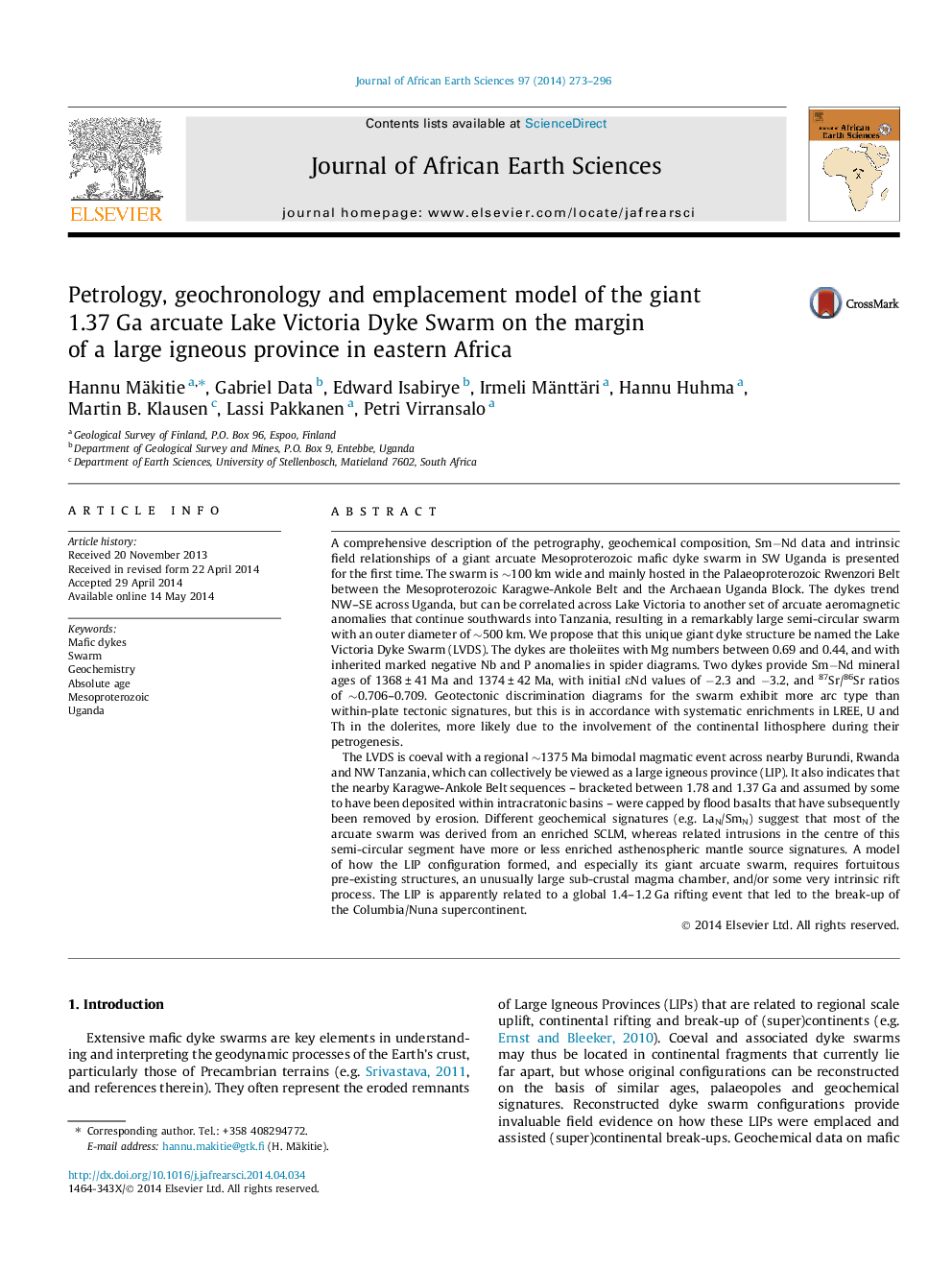| کد مقاله | کد نشریه | سال انتشار | مقاله انگلیسی | نسخه تمام متن |
|---|---|---|---|---|
| 4728787 | 1640209 | 2014 | 24 صفحه PDF | دانلود رایگان |

• Petrology, age and emplacement model of a giant 1.37 Ga dolerite swarm are presented.
• The swarm is unique due to its semi-circular form (diameter 500 km).
• The swarm is derived from a SCLM source.
• Mafic intrusions in the centre of the curved segment show asthenospheric signatures.
A comprehensive description of the petrography, geochemical composition, Sm−Nd data and intrinsic field relationships of a giant arcuate Mesoproterozoic mafic dyke swarm in SW Uganda is presented for the first time. The swarm is ∼100 km wide and mainly hosted in the Palaeoproterozoic Rwenzori Belt between the Mesoproterozoic Karagwe-Ankole Belt and the Archaean Uganda Block. The dykes trend NW–SE across Uganda, but can be correlated across Lake Victoria to another set of arcuate aeromagnetic anomalies that continue southwards into Tanzania, resulting in a remarkably large semi-circular swarm with an outer diameter of ∼500 km. We propose that this unique giant dyke structure be named the Lake Victoria Dyke Swarm (LVDS). The dykes are tholeiites with Mg numbers between 0.69 and 0.44, and with inherited marked negative Nb and P anomalies in spider diagrams. Two dykes provide Sm−Nd mineral ages of 1368 ± 41 Ma and 1374 ± 42 Ma, with initial εNd values of −2.3 and −3.2, and 87Sr/86Sr ratios of ∼0.706–0.709. Geotectonic discrimination diagrams for the swarm exhibit more arc type than within-plate tectonic signatures, but this is in accordance with systematic enrichments in LREE, U and Th in the dolerites, more likely due to the involvement of the continental lithosphere during their petrogenesis.The LVDS is coeval with a regional ∼1375 Ma bimodal magmatic event across nearby Burundi, Rwanda and NW Tanzania, which can collectively be viewed as a large igneous province (LIP). It also indicates that the nearby Karagwe-Ankole Belt sequences – bracketed between 1.78 and 1.37 Ga and assumed by some to have been deposited within intracratonic basins – were capped by flood basalts that have subsequently been removed by erosion. Different geochemical signatures (e.g. LaN/SmN) suggest that most of the arcuate swarm was derived from an enriched SCLM, whereas related intrusions in the centre of this semi-circular segment have more or less enriched asthenospheric mantle source signatures. A model of how the LIP configuration formed, and especially its giant arcuate swarm, requires fortuitous pre-existing structures, an unusually large sub-crustal magma chamber, and/or some very intrinsic rift process. The LIP is apparently related to a global 1.4–1.2 Ga rifting event that led to the break-up of the Columbia/Nuna supercontinent.
Journal: Journal of African Earth Sciences - Volume 97, September 2014, Pages 273–296